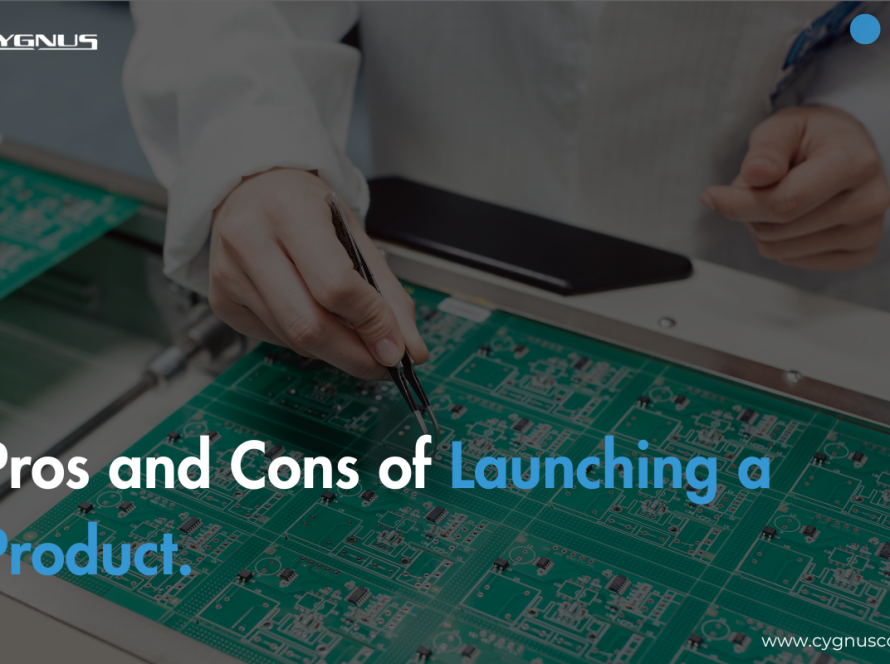In the manufacturing and electronic industry, ensuring the quality of products is crucial. Every product must be carefully examined to make sure it meets the required standards. This is where inspection processes come in.
Two of the most common methods for inspecting products are Automated Optical Inspection (AOI) and Manual Inspection. Both methods serve the same purpose: to find defects or issues in products before they reach customers. However, the way they achieve this goal is very different.
The traditional approach to PCB quality control has been manual inspection, but AOI is starting to take the lead.
In this article, we’ll explore the differences between AOI VS Manual Inspection, their advantages, and which method might be better suited for your needs.
What is Manual Inspection of PCBs
Manual Inspection, as the name suggests, involves human inspectors who visually examine products for defects. In electronics manufacturing, this might mean someone carefully looking over a circuit board with the naked eye or using magnifying tools. Inspectors rely on their training, experience, and attention to detail to spot any issues. If they find a problem, they can decide how to fix it on the spot.
This process typically uses tools like magnifying glasses or microscopes to spot issues such as soldering defects, misaligned components, and broken connections. Here’s a closer look at the manual inspection process:
- Human Operators: Skilled inspectors use their eyes and experience to detect issues. They might use tools to magnify the PCB and identify problems.
- Time-Consuming: Manual inspection can be slow, especially for large batches of PCBs.
- Error-Prone: One of the main issues in manual inspection is human error.. Even though inspectors are well-trained and experienced, they are still human and can make mistakes, especially when they have to check a large number of products.
- Training Required: Inspectors need extensive training to identify various types of defects accurately.
While manual inspection of PCBs has its benefits, such as flexibility and the ability to catch complex defects that might be hard to program into machines, it has several limitations that automation can address.
Introduction to Automatic Optical Inspection (AOI)
Automated Optical Inspection, or AOI, is a technology that uses machines to inspect products. In electronics manufacturing, AOI machines are commonly used to check circuit boards for defects.
These machines use cameras and powerful software to capture images of the product and compare them to a perfect standard. The software can quickly identify any differences, such as missing components, wrong placements, or soldering issues. Once the defects are identified, the system can flag them for correction.
Here’s how AOI works:
- High-Resolution Cameras: AOI systems use high-resolution cameras to capture detailed images of the PCB.
- Image Processing Software: The captured images are analyzed by software that can detect defects such as soldering issues, missing components, and misalignment.
- Automated Detection: AOI systems can quickly and accurately identify defects, comparing the inspected PCBs against pre-set standards.
- Integration with Production Lines: AOI systems are often integrated directly into production lines for real-time inspection.
Additionally, AOI (Automated Optical Inspection) plays a key role in quality control, especially in modern manufacturing. It offers an advanced way to make sure that printed circuit boards (PCBs) meet top standards.
By using machines to test PCBs, AOI systems help maintain the quality of electronic parts. With its fast and accurate inspection, AOI helps manufacturers keep high quality and avoid costly mistakes and repairs.
Comparing AOI (Automated Optical Inspection) VS Manual Inspection
Both AOI-Automated Optical Inspection VS manual inspection have their strengths and weaknesses. Here’s a comparison to help understand why automation is the future of PCB quality control:
Speed and Efficiency
AOI:
Automated Optical Inspection is incredibly fast and efficient. It can inspect thousands of components in a short time this makes it ideal for high-volume production. Since it’s automated, it doesn’t suffer from fatigue or inconsistency, ensuring that every product is inspected at the same speed and with th/.e same level of detail.
Manual Inspection:
Manual Inspection is slower because it depends on human inspectors who must carefully examine each product. While experienced inspectors can work quickly, their pace will never match the speed of AOI. Additionally, human inspectors can tire over time, leading to slower inspections and potentially missed defects.
Accuracy and Consistency
AOI:
One of the biggest advantages of AOI is its accuracy and consistency. The system can detect even the smallest defects, such as misaligned components or tiny scratches, with high precision. Because it follows programmed criteria, AOI provides consistent results, reducing the chances of defects slipping through the cracks.
Manual Inspection:
While human inspectors can be highly accurate, they are prone to variability. Factors like fatigue, attention span, and individual differences can affect the consistency of manual inspections. Additionally, some defects might be overlooked, especially if they are subtle or if the inspector is under time pressure.
Flexibility and Adaptability
AOI:
AOI systems are less flexible when it comes to changes. They need to be programmed and calibrated for each specific product or defect type, which can be time-consuming. If a product design changes or a new defect type needs to be inspected, the AOI system might require significant reconfiguration.
Manual Inspection:
Humans are naturally more flexible and adaptable. A skilled inspector can quickly adjust to new products or unexpected defects without needing any reprogramming. They can also use their judgment to identify potential issues that might not be part of the standard inspection criteria.
Cost
AOI:
The initial investment in AOI systems can be high due to the cost of the equipment and software. However, once installed, AOI can reduce labor costs and increase inspection speed. This may lead to long-term savings, especially in high-volume production.
Manual Inspection:
Manual inspection has lower upfront costs, as it doesn’t require expensive equipment. However, the ongoing labor costs can add up, particularly in large-scale operations. Additionally, the potential for human error may lead to costly defects being overlooked.
Human Element
AOI:
AOI eliminates the need for human inspectors in the inspection process, which can be a double-edged sword. On one hand, this reduces the risk of human error; on the other hand, it removes the human judgment and intuition that can be valuable in catching unusual defects or making decisions in complex situations.
Manual Inspection:
The human element in Manual Inspection can be a significant advantage. Inspectors can use their experience and judgment to spot defects that might not be easily programmed into an AOI system. They can also make real-time decisions about the severity of defects and whether a product should be rejected or reworked.
Conclusion
Both AOI (Automated Optical Inspection) and Manual Inspection have their places in the manufacturing process. AOI offers speed, accuracy, and long-term cost savings. So it is ideal for large-scale production where consistency is key. However, Manual Inspection, with its flexibility and human judgment, is better suited for smaller operations or situations where products and defects are constantly changing.
The best approach often depends on the specific needs of the manufacturing process. Some companies may benefit from combining both methods, using AOI for routine checks and Manual Inspection for more complex or specialized tasks.
However, as technology continues to advance and the demands for higher quality and reliability grow, AOI will play an increasingly critical role in ensuring that PCBs meet the highest standards. Manufacturers can improve their quality checks, save money, and remain competitive in a fast-changing industry by using automated optical inspection.
At Cygnus Electronic Corporation, we understand why automation is the future of PCB quality control and are committed to leveraging AOI technology to deliver superior results. The numerous benefits and advancements that AOI provides, including its pivotal role in PCB inspection, align with our mission to offer cutting-edge solutions in the electronic manufacturing sector.




